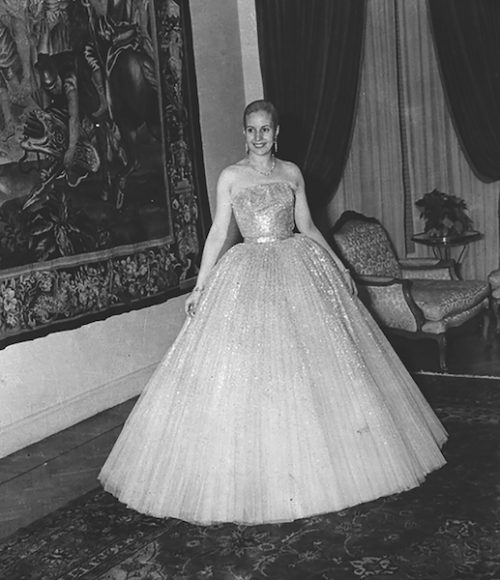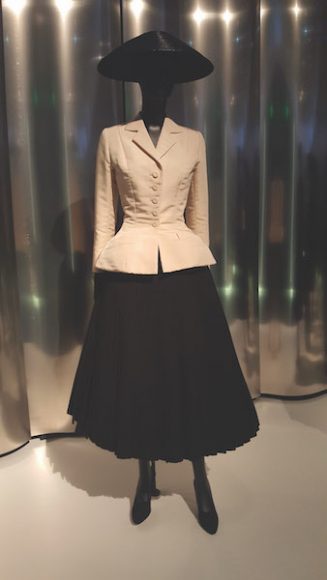Is couture still relevant in the age of Covid and police crackdowns?
The fashion houses certainly hope so, Indeed, they are betting on it. While retail stalwarts Lord + Taylor and Neiman Marcus and brands Brooks Brothers, J. Crew and Jos. A Bank file for bankruptcy protection, many of the fashion houses recently unveiled their Autumn-Winter collections online for what would’ve been Paris Fashion Week. There is always an element of the otherworldly about these shows, and few were more so than that of Dior, whose collaboration with Italian filmmaker Matteo Garrone (“Pinocchio”) evoked the swooning surrealism of Wes Anderson’s “The Grand Budapest Hotel” and the misty mythology of J.W. Waterhouse’s Pre-raphaelite paintings, set to something out of Erik Satie’s seductive, serpentine “Gnossienne No. 1.”
In the video, https://www.youtube.com/watch?v=yxBFwqRbI8c a group of seamstresses at the fashion house prepare tiny mannequins with Dior creations. These are then conveyed in a large dollhouse transported by two bellhops — who would be right at home in “The Grand Budapest Hotel” — to an Arcadian setting. Curious naiads at water’s edge, an Echo still pining for her Narcissus and a Daphne who seems distracted from smooching with her Apollo in a leafy bower (unlike the Greek mythological Daphne, begging to be turned into a laurel to escape his attentions) — all select designs from the bewitching maquettes that will be transformed into their goddess gowns.
But let’s for a moment rewind the video, back to where the seamstresses put the finishing touches on the miniature creations. What do we spy there? A seamstress sews a cinched waist ball gown while another hangs a tulle creation and a third snaps a cream jacket fitted at the waist that looks like the top of the legendary Bar Suit, with its flaring midi-length black skirt. Immediately, we are transported back to postwar Paris.
The time was 1947, and Christian Dior — who had continued to design throughout the Nazi occupation, establishing his own house in 1946 in a small Second Empire hotel that had been built by Count Alexandre Walewski, Napoleon’s natural son — had decided to create what he called “flower women.” Gone were the straight, knee-length skirts and long, shoulder-padded jackets worn by self-sacrificing, working women during the war years. Dior’s “Corolle” collection — from the botanical corolla, or circlet of flower petals — would blend closely woven fabrics, bustiers, corsets and petticoats to underscore the female figure.
Not everyone was on board. Some scoffed at the impracticality of reams of material at a time still marked by deprivation, while feminists criticized the traditionally female silhouette that they thought (rightly) signaled women’s return to a more conservative role. However, women themselves, Farid Chenoune writes in the estimable “Dior” (Assouline), were ready:
“They yearned to be like the ‘flower women’ who paraded in the enchanted world that was the Dior salon, with their tiny waists, high busts, delicately sloping shoulders and exaggerated hips, to have voluptuous curves once more and a cinched-in waist; to feel the swooningly, bewitchingly feminine movement, the elegant swirl, whirl, flounce and flair of these entrancing gowns with their layers of petticoats and yards of fabric, swooping down to flirt (within a mere foot or less of the Parisian sidewalk) with the hemline of desire.”
Living in Paris, the writer Nancy Mitford wrote enthusiastically to her sister Diana Mosely of Dior’s “Anna Karenina clothes.” But it was Harper’s Bazaar editor-in-chief Carmel Snow who gave the collection the name that has come down through fashion history — “the New Look.”
Soon the New Look was everywhere, from Hollywood (Leslie Caron in “An American in Paris,” Audrey Hepburn in “Roman Holiday,” Grace Kelly in “Rear Window”) to the halls of power (Argentina’s first lady Eva Peròn). But few embodied it the way Princess Margaret, the rebellious younger sister of Queen Elizabeth II, did. On Nov. 21, 1951, the petite but curvaceous princess arrived at the Hôtel Perrinet de Jars in Paris in support of the Hertford British Hospital there, garbed in a cream tulle Dior ball gown — embroidered and appliquéd in golden sequins, rhinestones, raffia and mother of pearl — that she had worn for her 21st birthday and a Cecil Beaton photo shoot to mark the occasion. It may have conjured Disney’s “Cinderella” (1950), but there was a real-life princess championing a designer who in turn would help make her a fashion icon.
Six years after that ball, Dior passed away. Yet the look he created 73 years ago has had its descendants in John Galliano’s edgy iteration for its 60th anniversary in 2007 and in Raf Simons’ 2012 debut collection. The New Look has also inspired a number of fictional treatments, as in the 1992 film “Mrs. ’Arris Goes to Paris,” based on the bittersweet 1958 Paul Gallico novel about a London charwoman determined to have a Dior ball gown of her own; the 2016 PBS “Masterpiece” series “The Collection”; and “The Crown,” which recreates Princess Margaret’s photo shoot in her “Cinderella” gown.
In echoing the company’s history in both the video and its designs for fall, Dior –now controlled by fashion juggernaut Bernard Arnault, head of LVMH — isn’t merely paying tribute to its storied past. It is sending a message that even in catastrophic times, fashion can be an oasis of enchantment.






